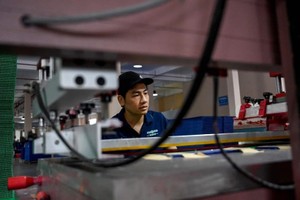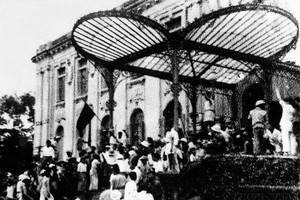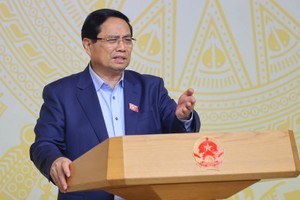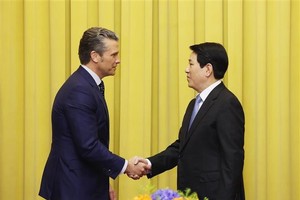Japan's factory output rose in April, data showed Tuesday, in the first sign of a tentative recovery for the world's number three economy, hobbled by a huge quake-tsunami and nuclear crisis.
The 1.0 percent rise was lower than expectations of a 2.9 percent jump in a poll of economists by Dow Jones Newswires and the Nikkei but analysts said the outlook was rosy.
The figure compares with a drop in industrial production of 15.5 percent in March, the sharpest fall on record, as the March 11 disaster shattered supply chains and crippled electricity-generating facilities, including a nuclear power plant at the centre of an ongoing atomic emergency.
"Production still remains stagnant due to the impact from the Great East Japan Earthquake," the industry ministry said in a statement released with the figures, adding a recovery was expected in the near future.
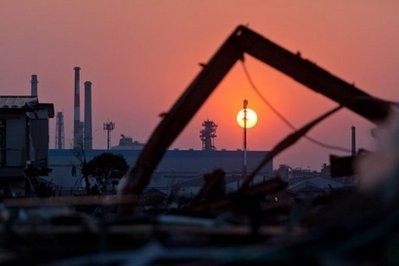
The economy slipped back into recession in January-March, contracting sharply after the disasters left around 25,000 dead or missing and devastated infrastructure and manufacturing facilities, plunging the nation into its worst crisis since World War II.
Many key component manufacturers are based in the worst-hit regions and suffered damage to their facilities from the 9.0 magnitude earthquake or were inundated by the giant wave that followed.
Industrial behemoths such as Sony and Toyota were forced to halt some production.
While fears of an electricity supply-demand imbalance going into the summer months have eased slightly, the situation remains volatile, analysts warn.
"In April, the production of the auto sector did not recover as much as the market had expected. But there are many positive signals in the economic report," said Hiroshi Watanabe, economist at Daiwa Institute of Research.
The government forecast that output would rise 8.0 percent in May and 7.7 percent in June, with production in transport equipment expanding 35.7 percent in May and 36.7 percent in June.
"It was widely thought that the disruption in the supply chain would last until the July-September quarter, but if this trend of recovery continues, the supply chain may return to the pre-disaster state as early as June. I would say the prospect is pretty bright," Watanabe said.
The effect of the earthquake was grave, said Japan Research Institute chief economist Hidehiko Fujii, but "the recovery trend as shown in forecasts is extremely strong. It is possible for production to be restored to pre-quake levels before summer."
In a separate sign of the slow pace of recovery household spending fell by 3.0 percent on year for the second straight month as cautious consumers held off on purchases of non-essential goods, although the drop was less profound than a market expectation of 8.5 percent.
Although sales of water and food surged as people stockpiled immediately after the quake and the nuclear crisis at the Fukushima Daiichi plant, consumers have held off spending on areas such as entertainment and travel.
Analysts warn that this mood of voluntary self restraint will exacerbate any downturn.
The government said unemployment was at 4.7 percent in April, up from 4.6 percent in March and matching market expectations.
But the jobless figures do not fully cover the expected impact of the disaster since they exclude data from the three most heavily hit areas of Japan.
"The employment condition had just started picking up from the Lehman Brothers crisis when the disaster hit the country," Watanabe said. "Today's report shows the number of jobs declined mostly for women and younger people. Many part-time positions seemed to have been reduced."
